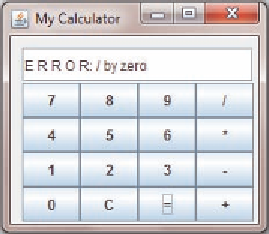Java Reference
In-Depth Information
FIGURE 11-10
An attempt to divide by 0
QUICK REVIEW
1
.
An exception is an object of a specific exception class. Java provides extensive
support for exception handling by providing several exception classes. Java
also allows users to create and implement their own exception classes.
2
.
The
try
/
catch
/
finally
block is used to handle exceptions within a program.
3
.
Statements that may generate an exception are placed in a
try
block. The
try
block also contains statements that should not be executed if an exception occurs.
4
.
A
try
block is followed by zero or more
catch
blocks.
5
.
A
catch
block specifies the type of exception it can catch and contains an
exception handler.
6
.
The last
catch
block may or may not be followed by a
finally
block.
7
.
The code contained in the
finally
block always executes, regardless of
whether an exception occurs, except when the program exits early from a
try
block by calling the method
System.exit
.
8
.
If a
try
block is not followed by a
catch
block, then it must have the
finally
block.
9
.
When an exception occurs, an object of a specific exception class is created.
10
.
A
catch
block can catch either all exceptions of a specific type or all types
of exceptions.
11
.
The heading of a
catch
block specifies the type of exception it handles.
12
.
The
class
Throwable
, which is derived from the
class
Object
, is the
superclass of the
class
Exception
.
13
.
The methods
getMessage
,
printStackTrace
, and
toString
of the
class
Throwable
are
public
and so are inherited by the subclasses of
the
class
Throwable
.
1
1




Search WWH ::

Custom Search